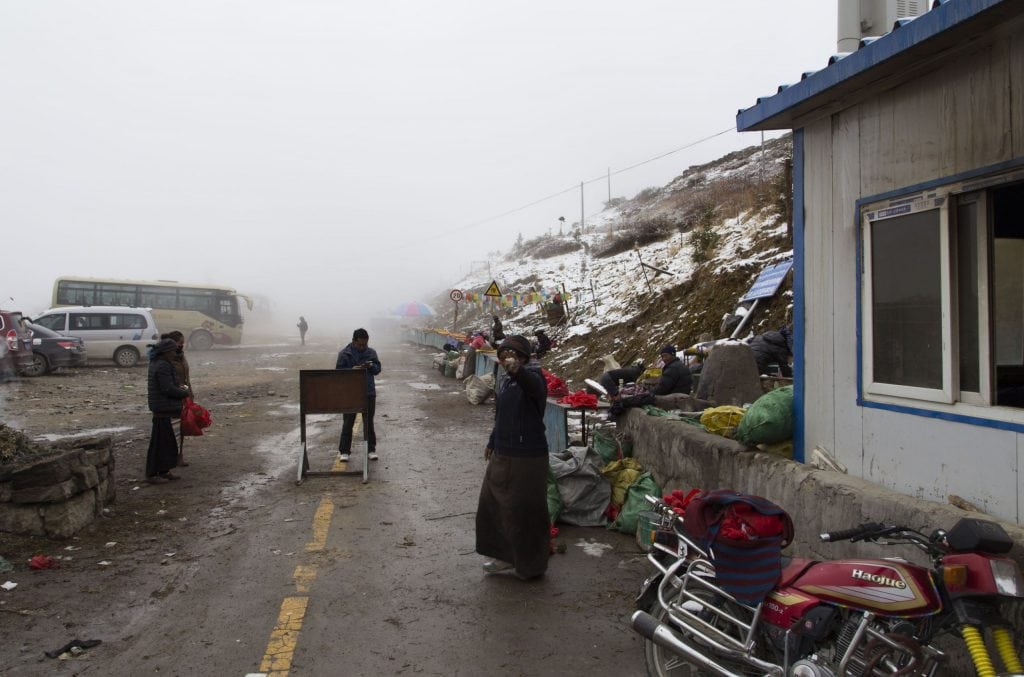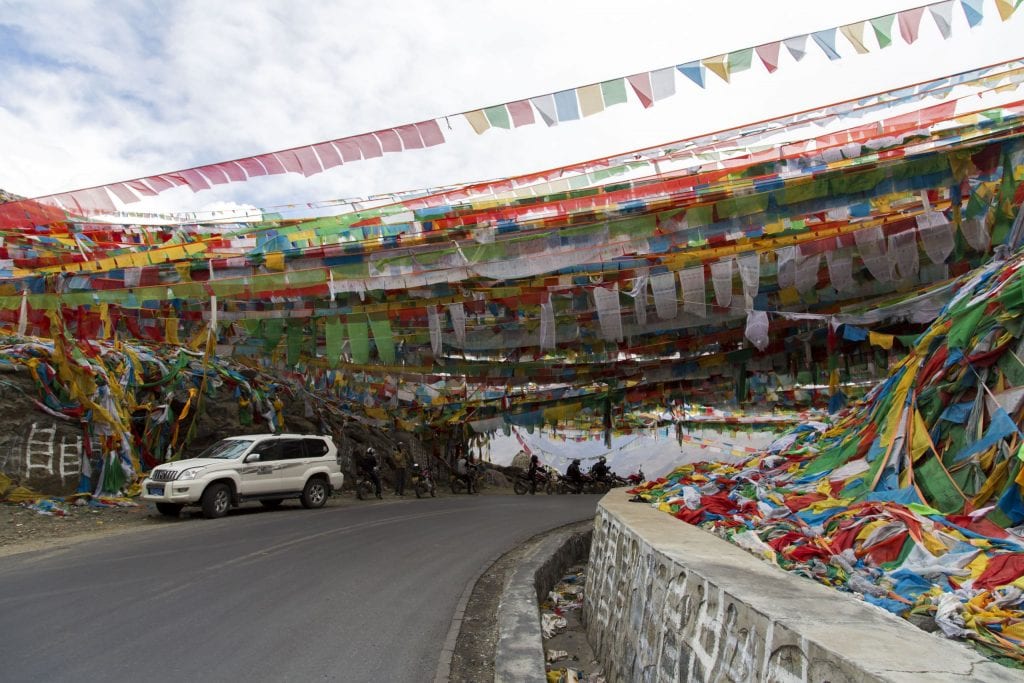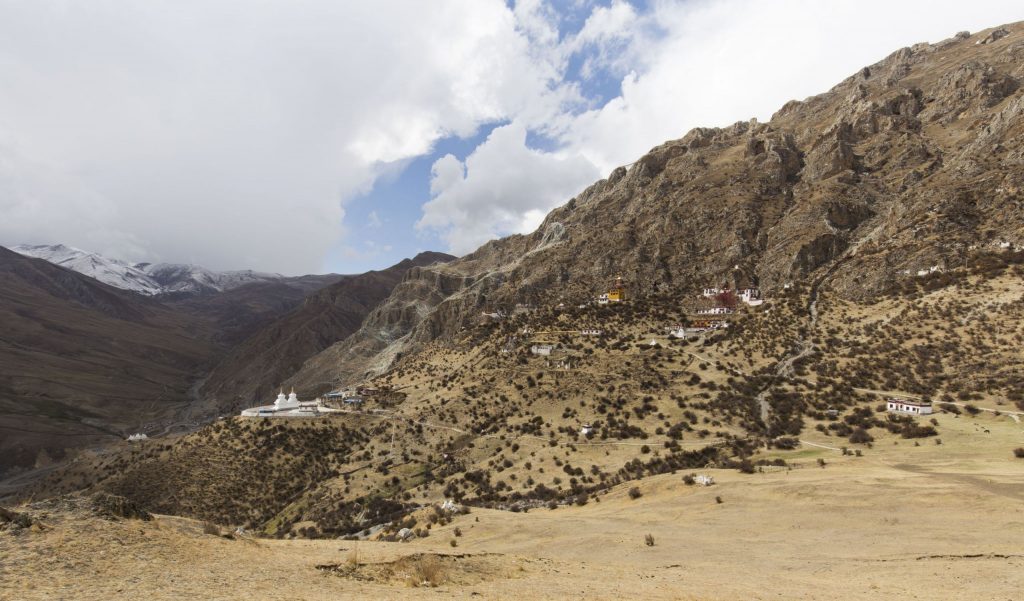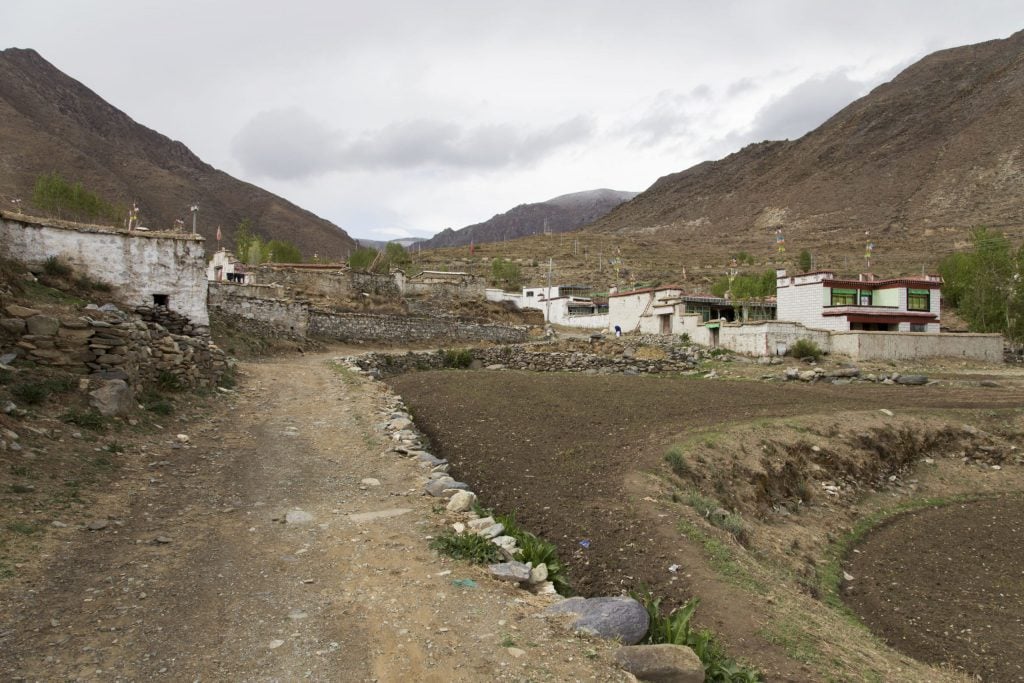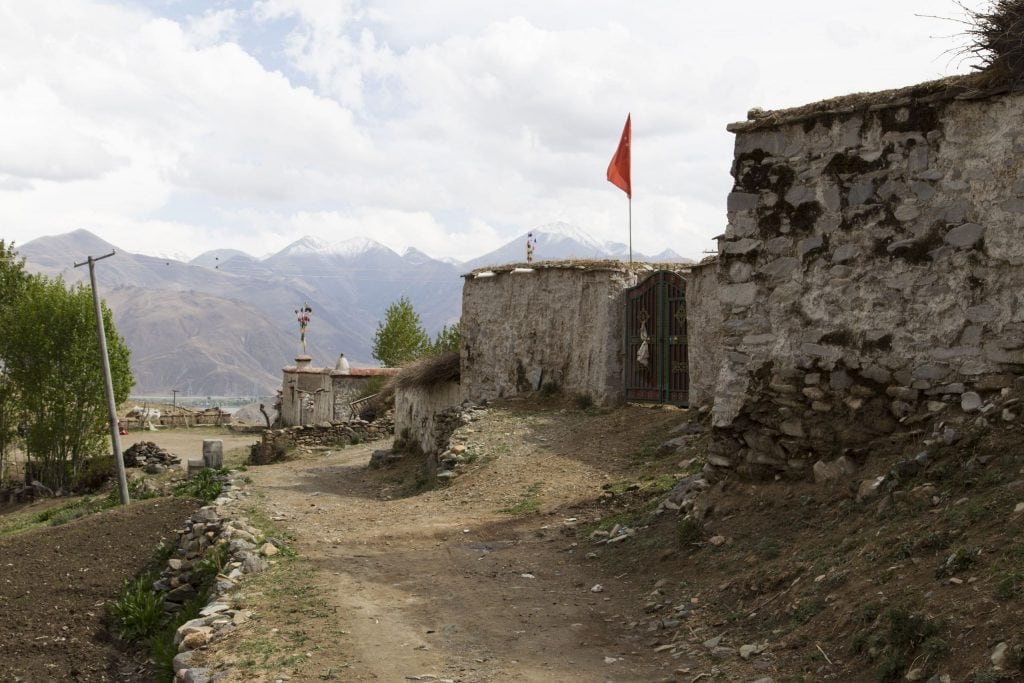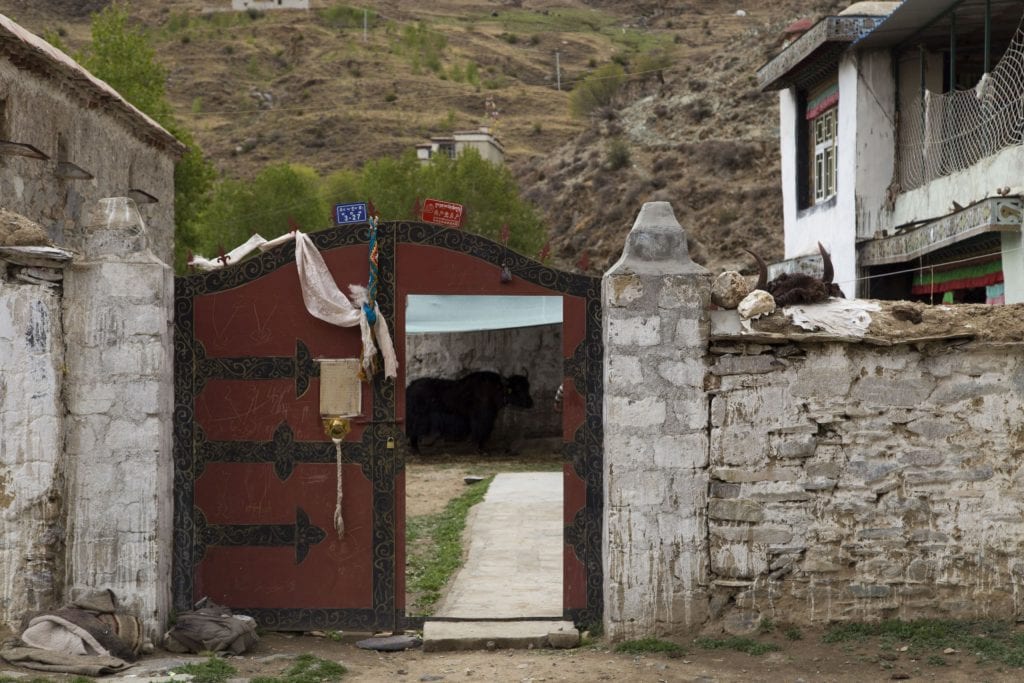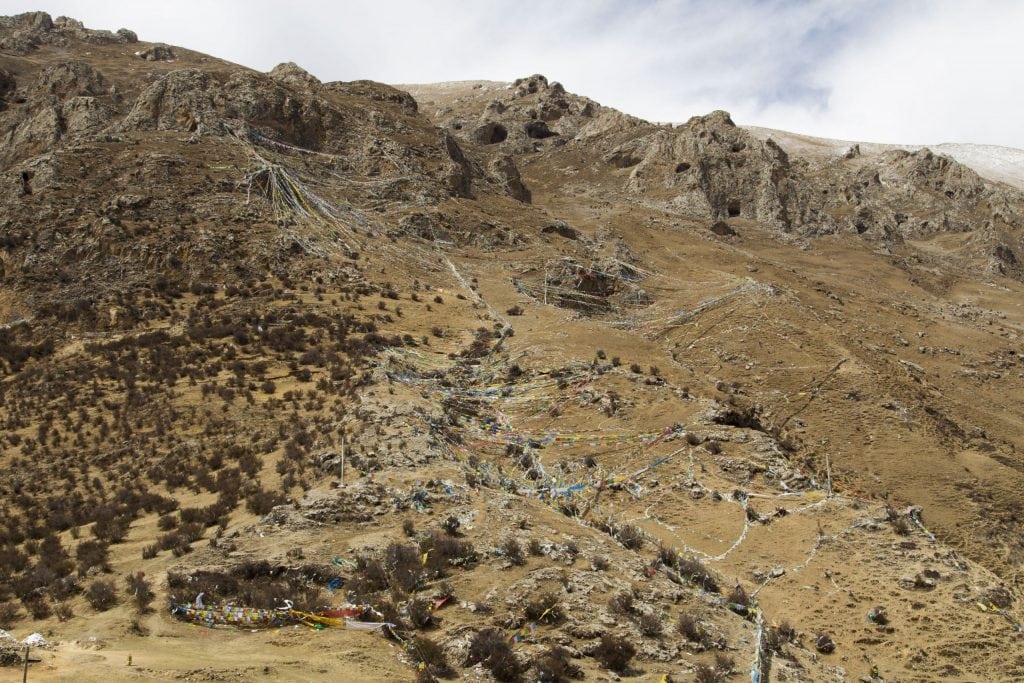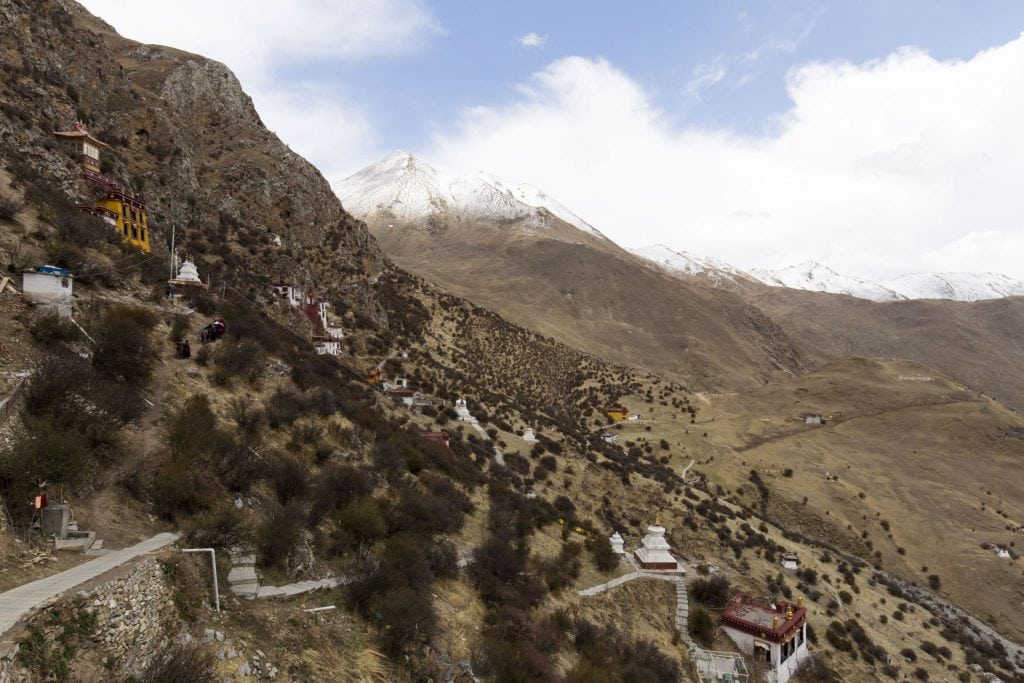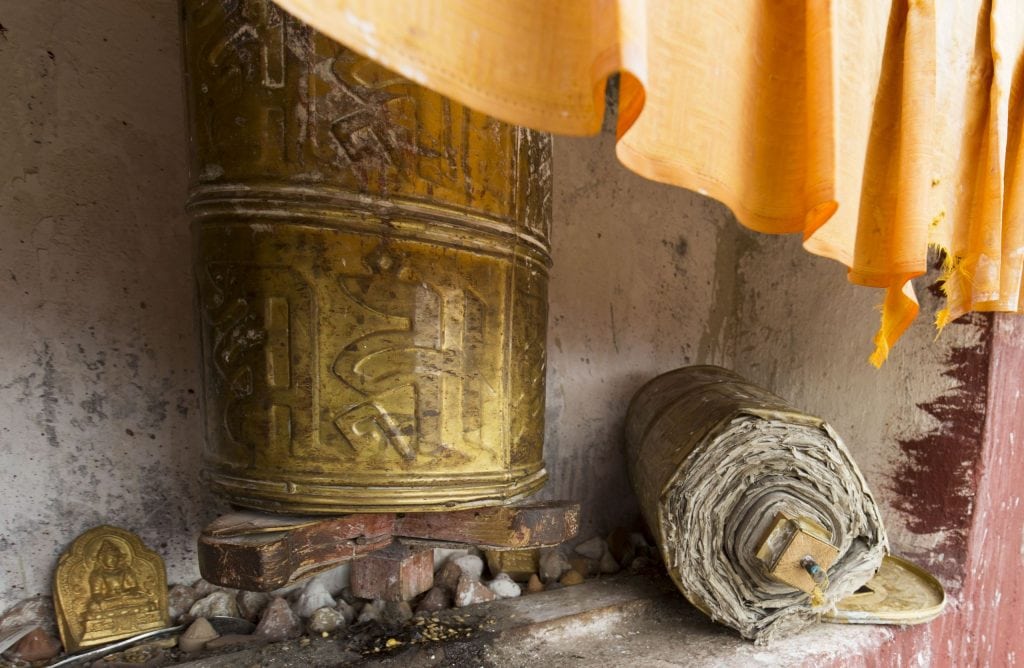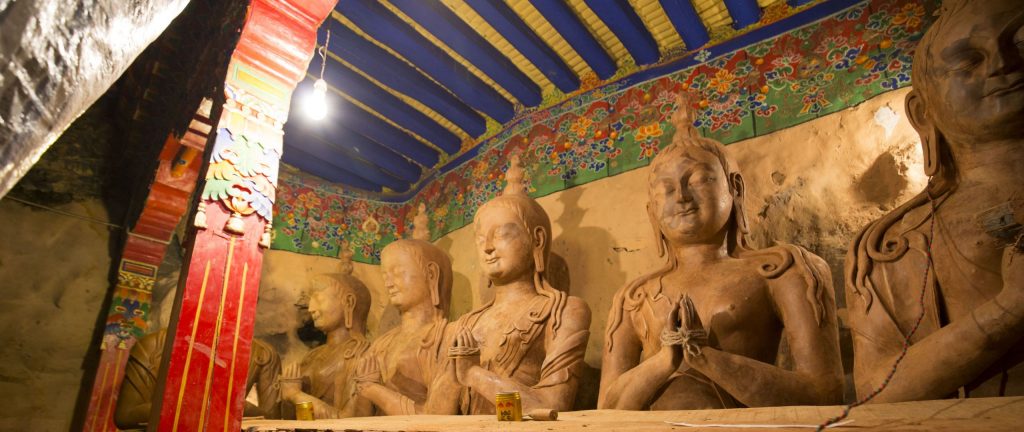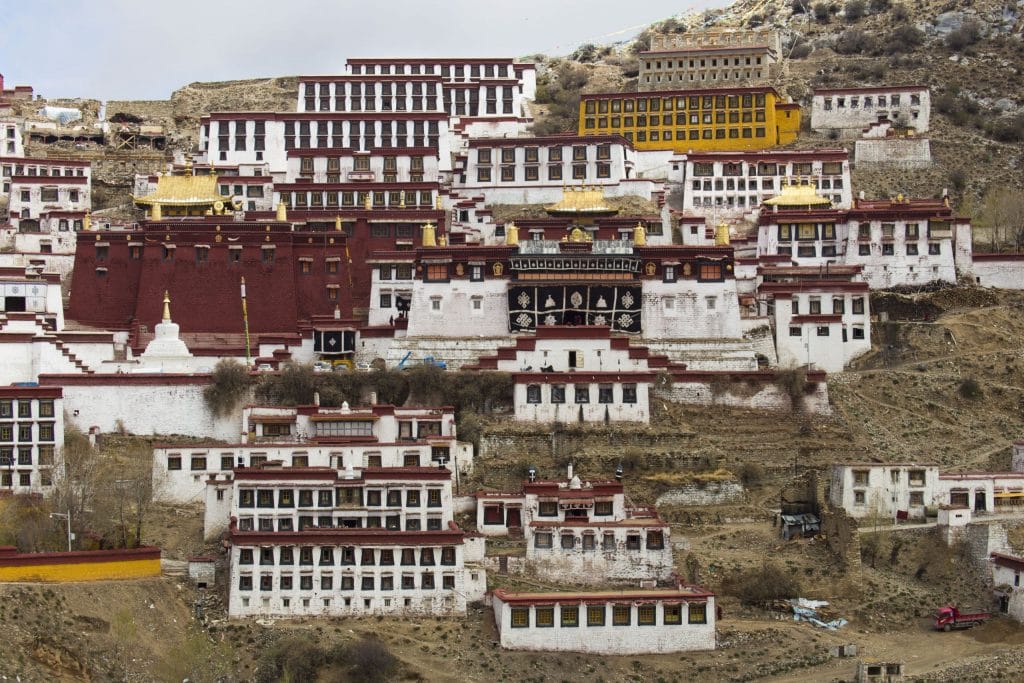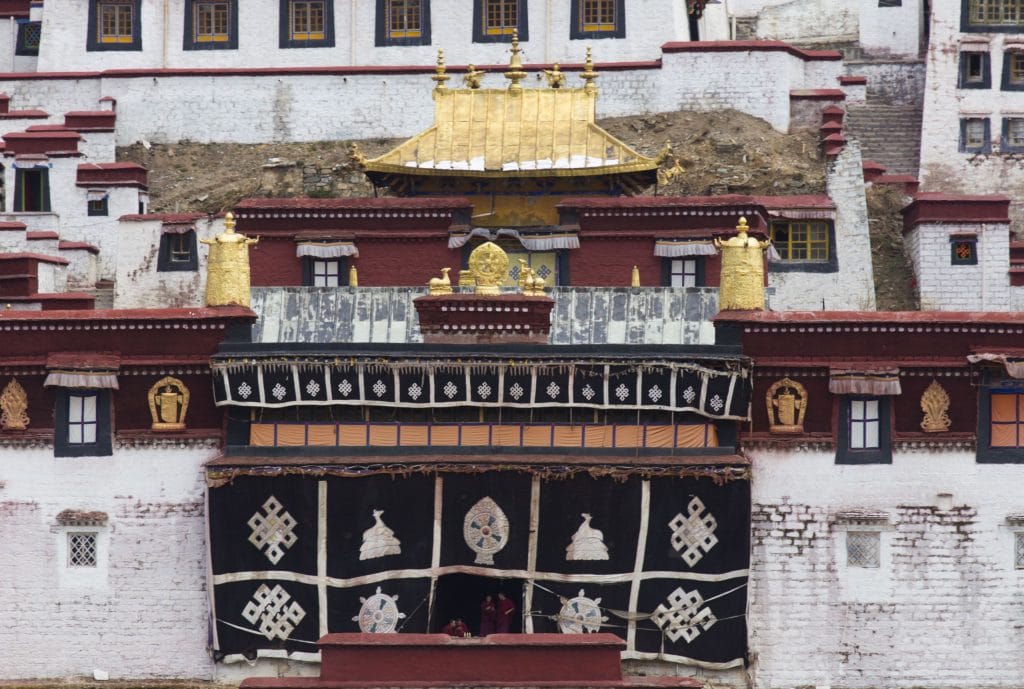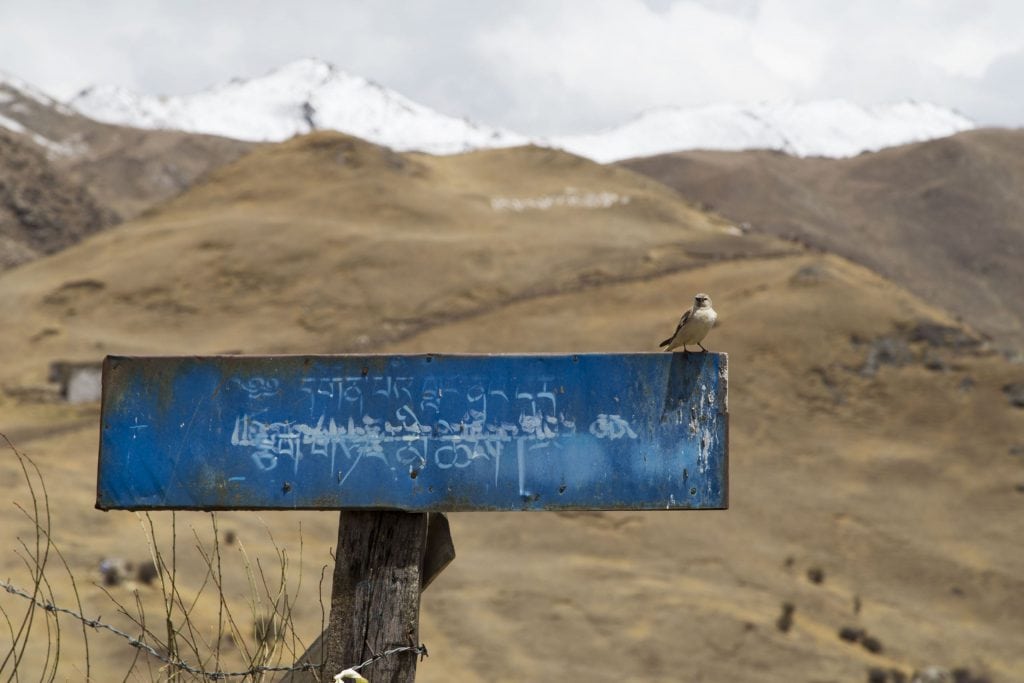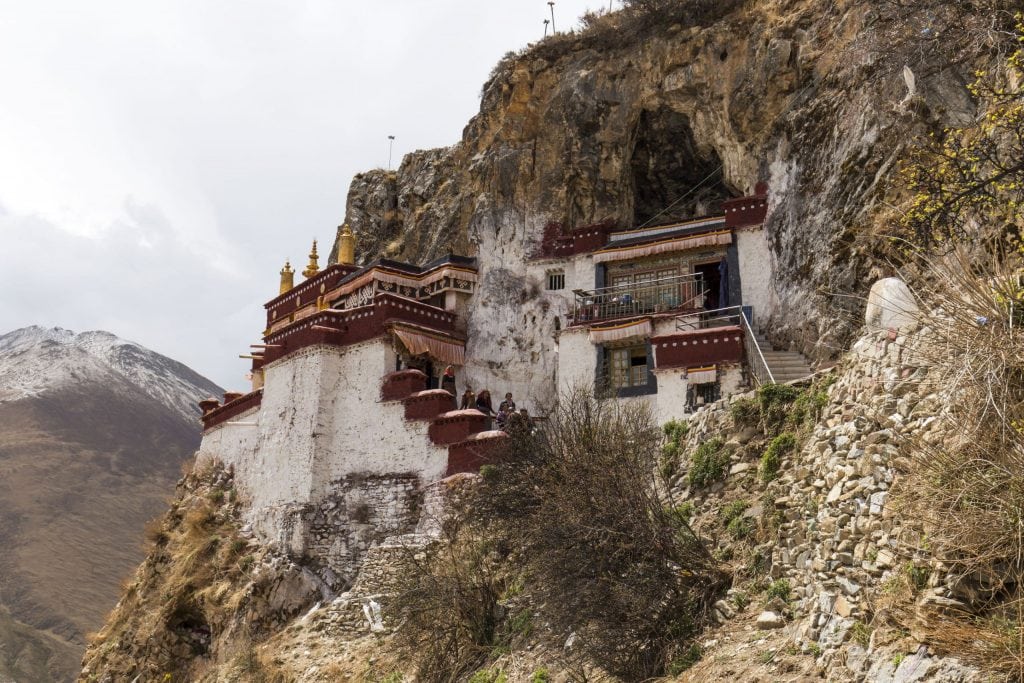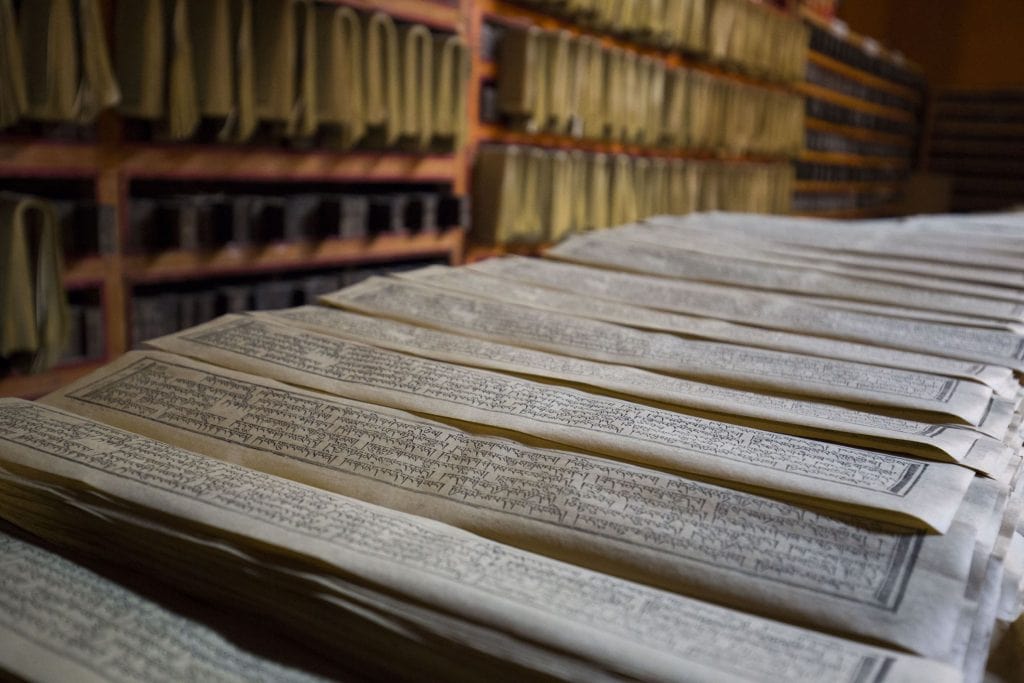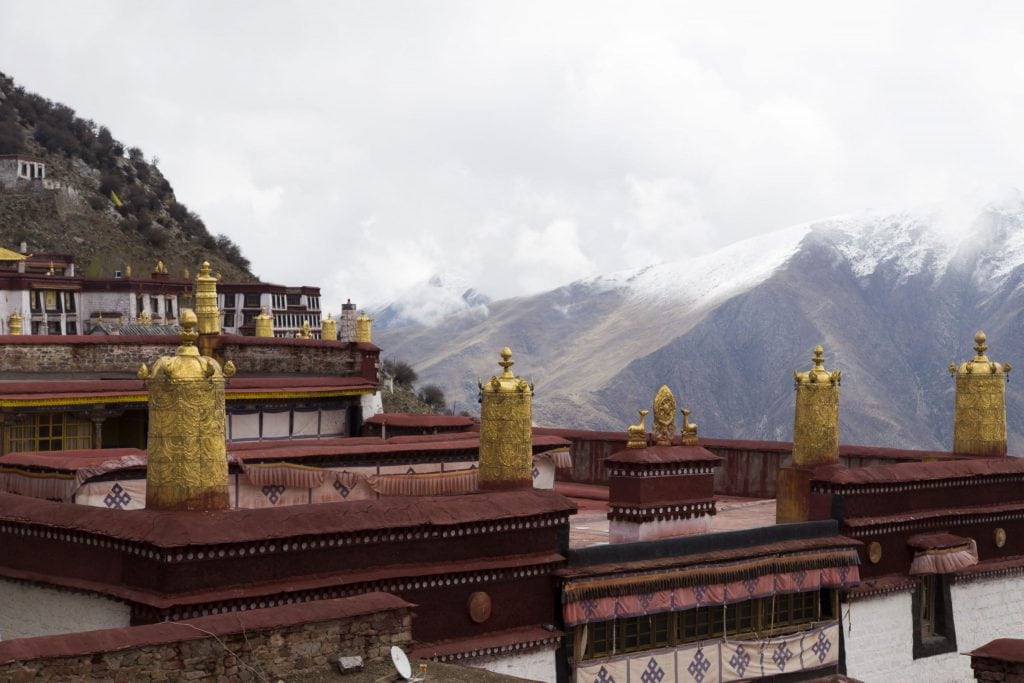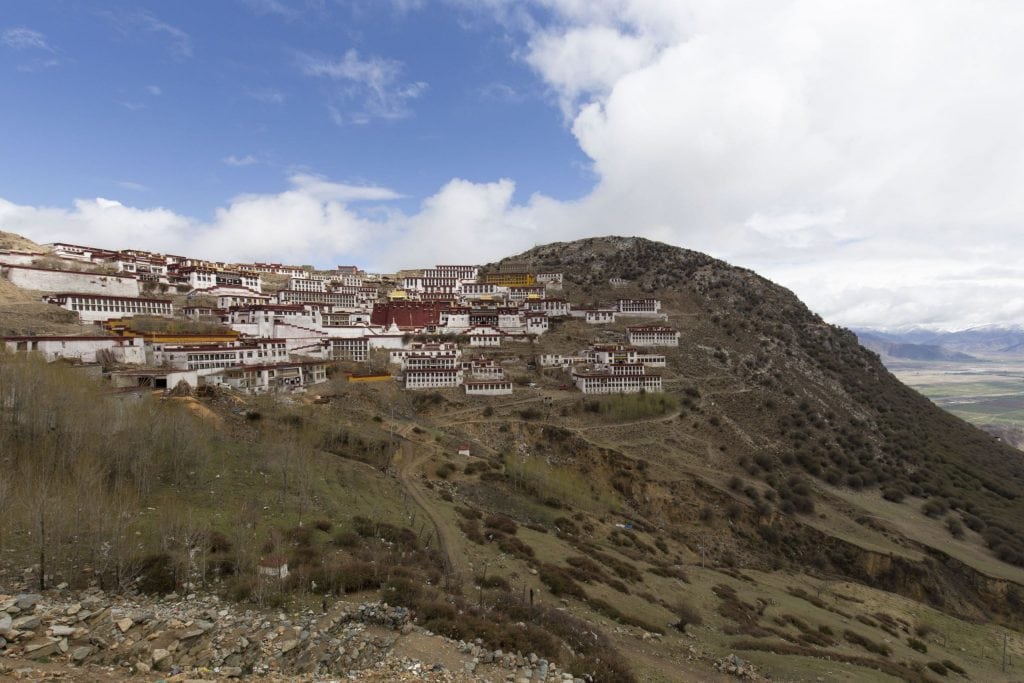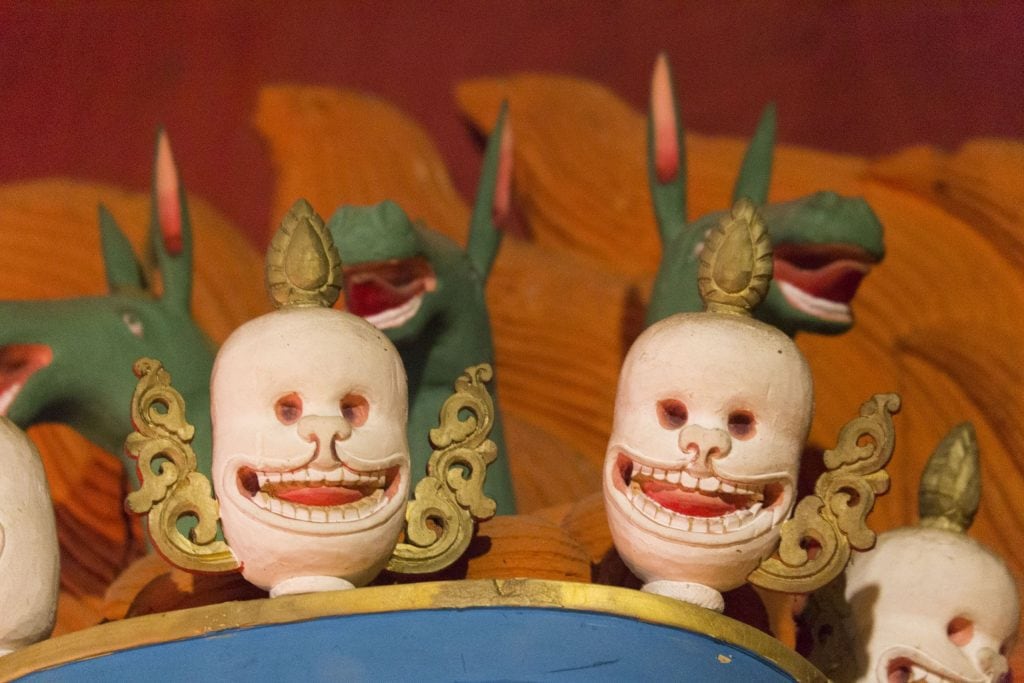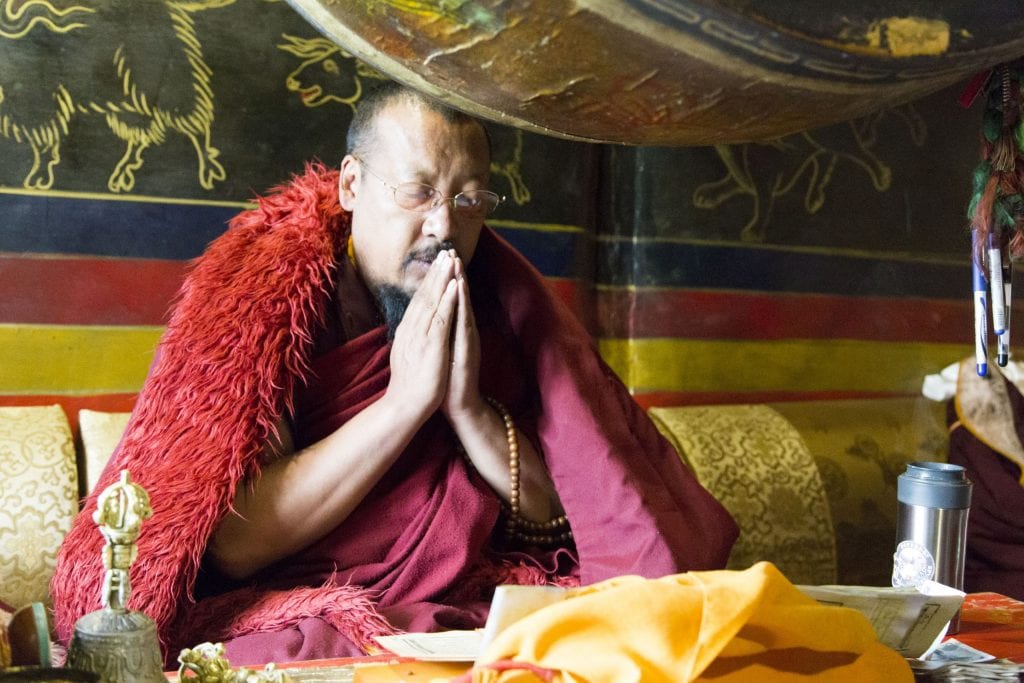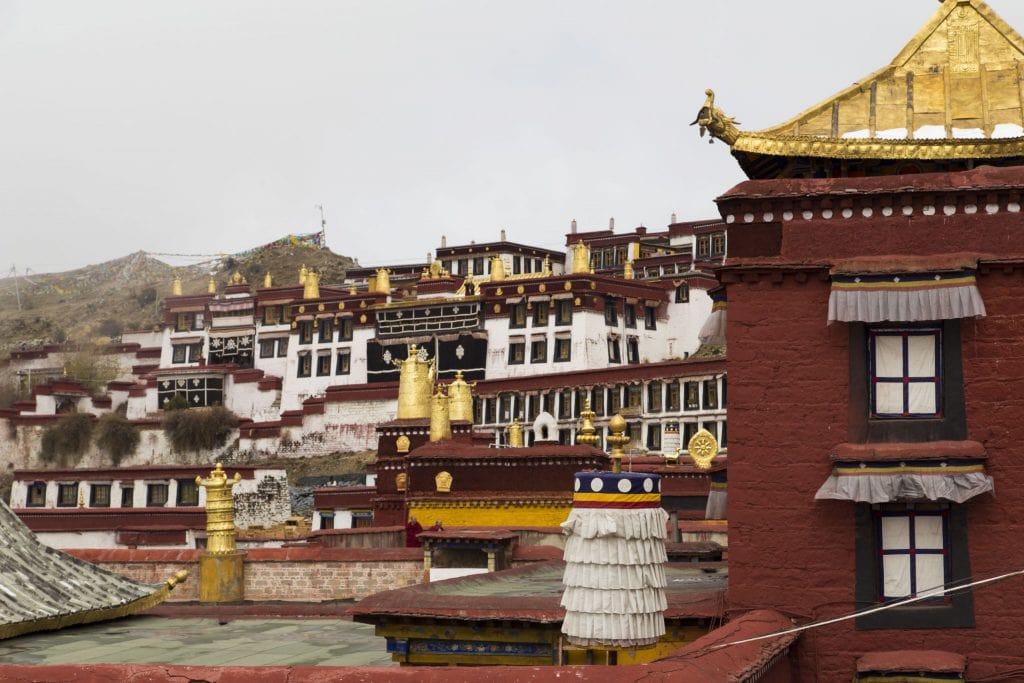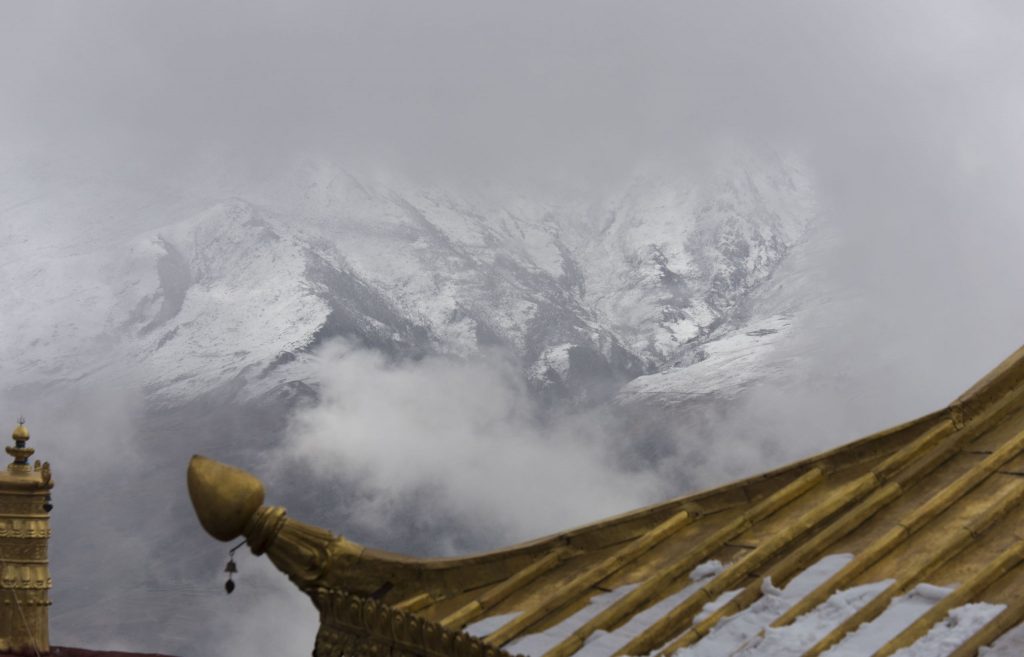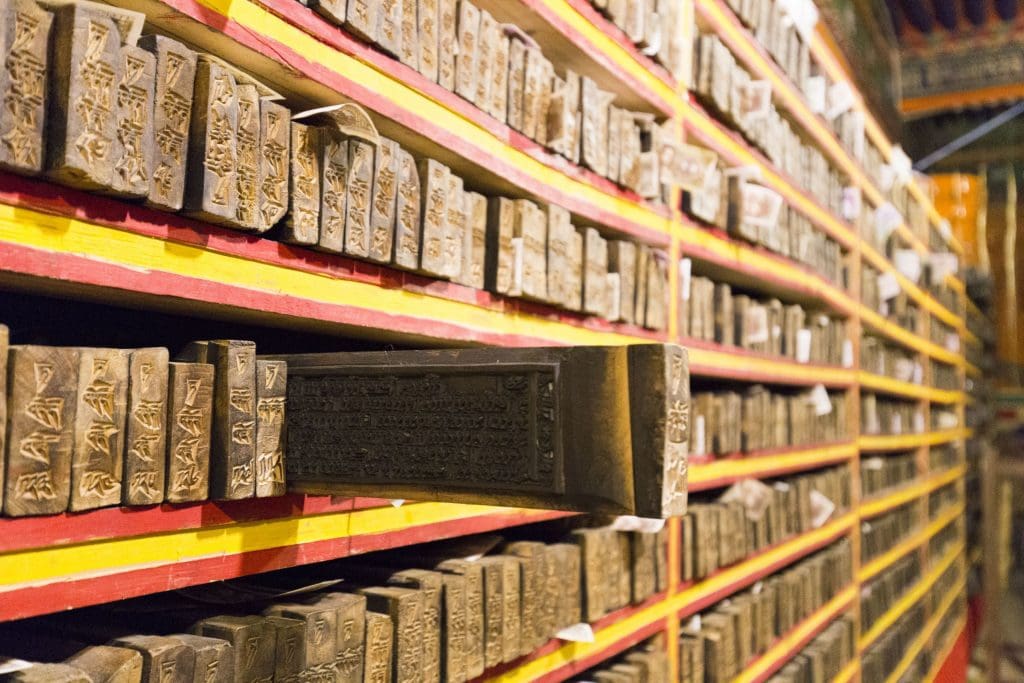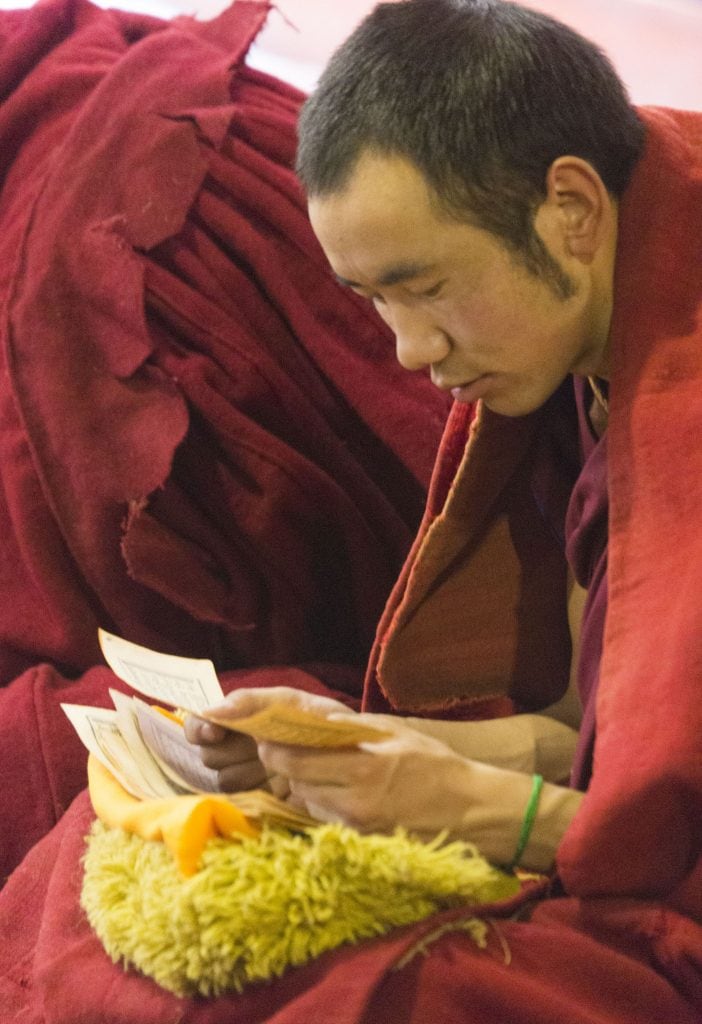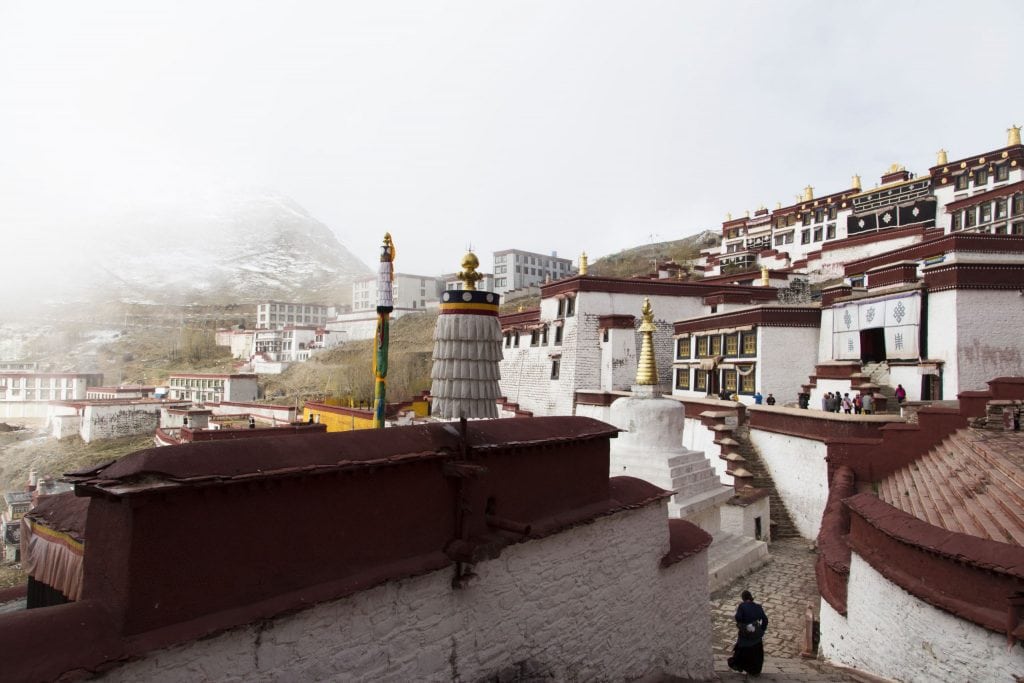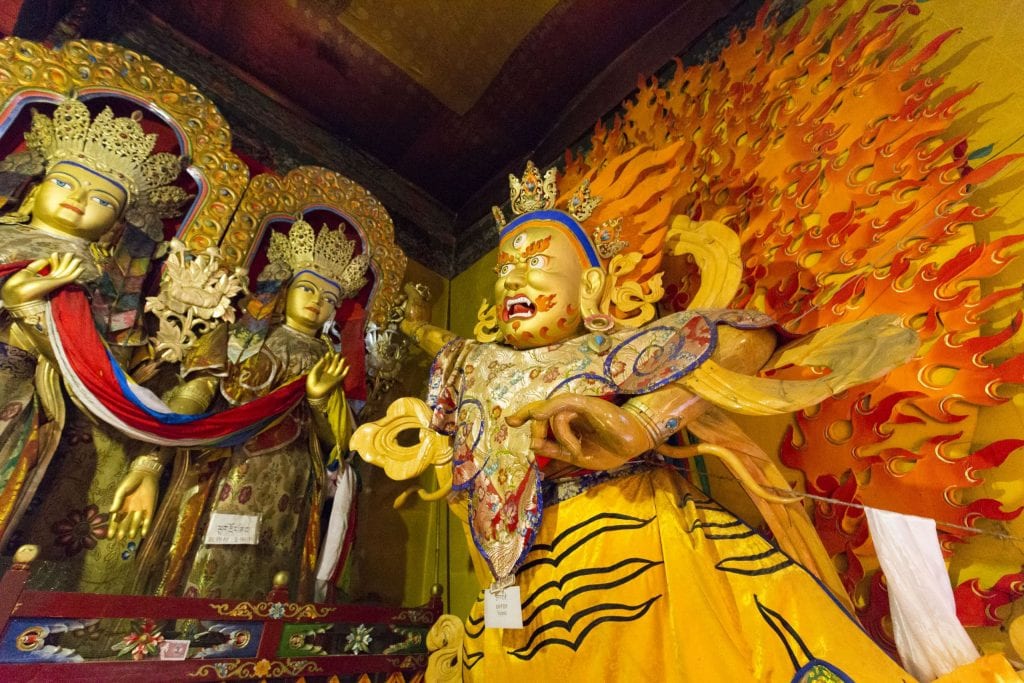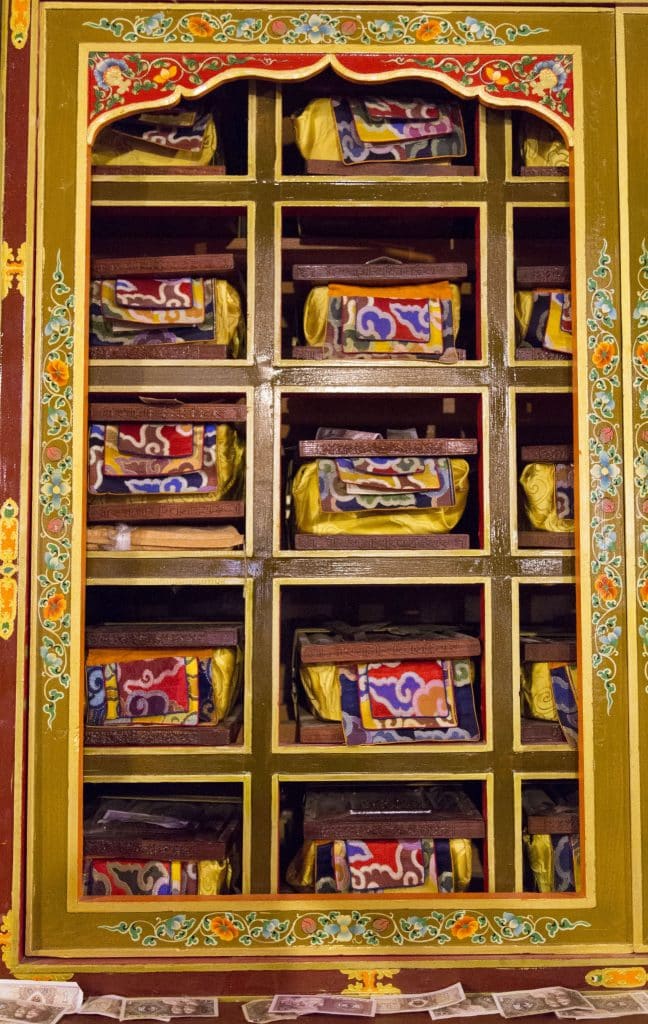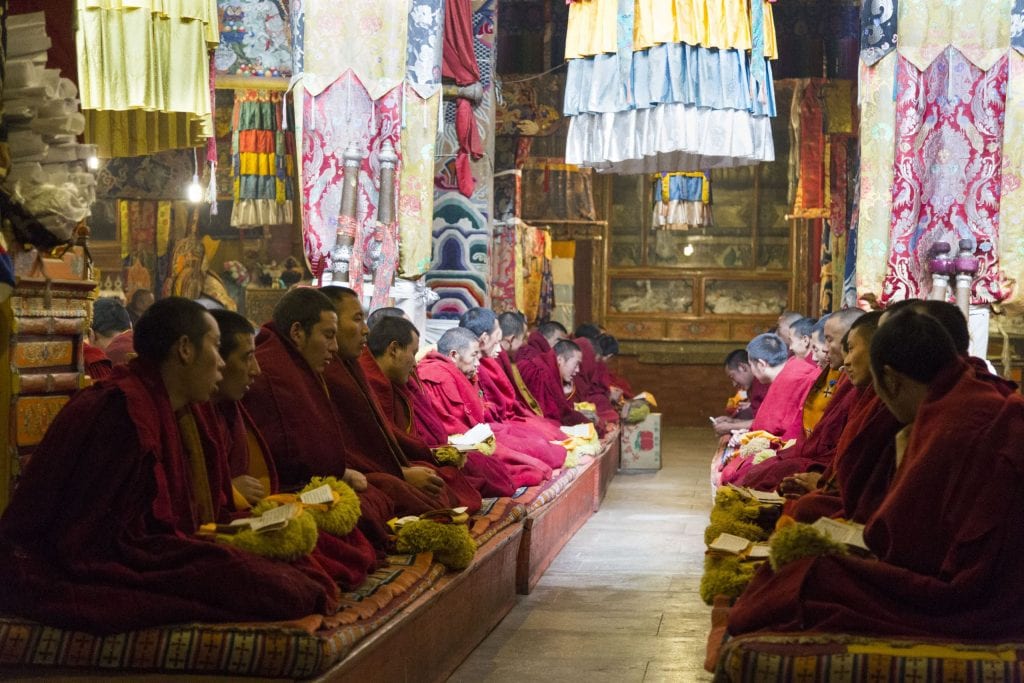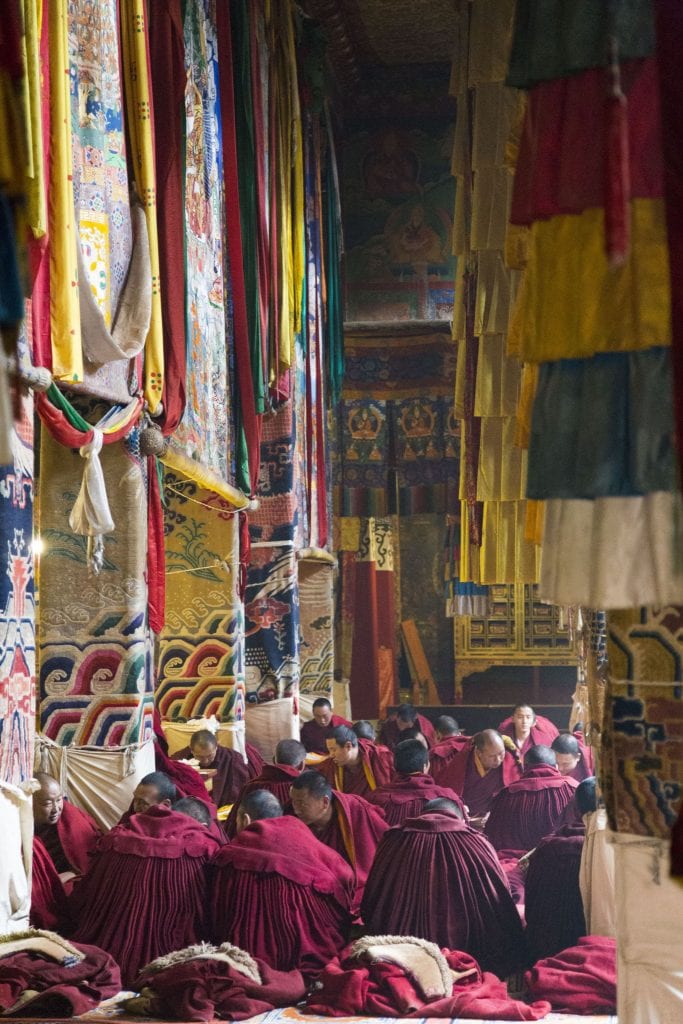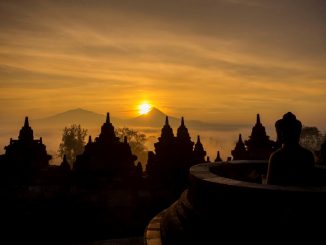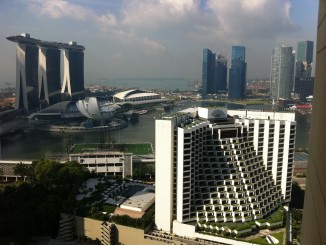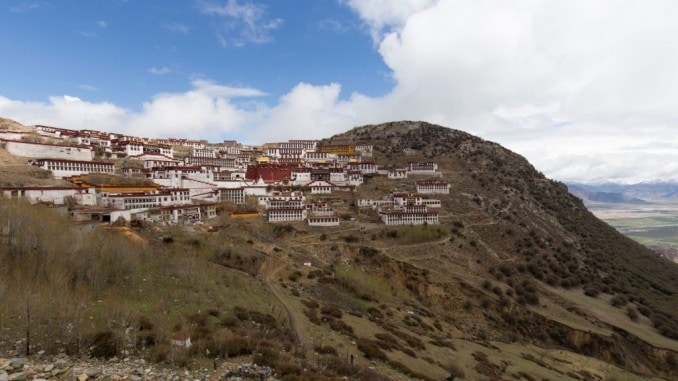
Table of Contents
A day trip from Lhasa which should be on everyone’s agenda during a visit to Tibet is a visit to the Ganden Monastery and Drak Yerpa. You will also have the opportunity to visit some local small Tibetan villages if you have not yet done that on another day trip. During my week in Lhasa this was one of the trips I did with my son. Both monasteries are located on altitudes of 3800-4400 meters and best visited not on the first day due to the possible altitude sickness. This article contains more photos as text; don’t forget to check out the gallery below. Join me on a journey to these Tibetan monasteries.
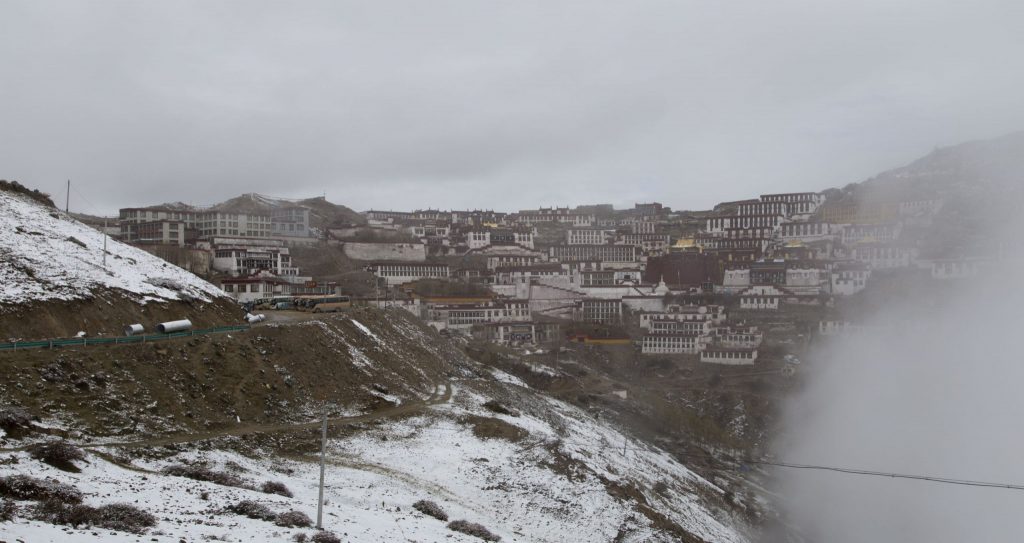
Ganden Monastery in Tibet
Ganden Monastery is located about 45 kilometers north of Lhasa. Currently a new highway is constructed making it more easy to reach the monastery. We unfortunately had many detours because of these road construction. The last part is up the mountain by hairpins and we arrived when the buildings were still partly hidden in clouds (see photo above). It was pretty cold at this altitude and we were not dressed for it, so we went first to the main building where it was warm.
TIBET – 7 days in Lhasa: a Tibet itinerary & practical travel tips
The main temple is the location of the tomb of Je Tsongkhapa Lozang-dragpa who founded the main temple of the Ganden Monastery in the early 15th century. His tomb can be seen in the Serdung, the Holy Stupa Hall, and is made of silver and gold. It was only covered in gold till the rule of the 13th Dalai Lama. Pagodas are put on the tomb when Dalai Lama’s pass away. It is beautifully decorated with a lot of fine art, flowers. You will see lots of money put in by the pilgrims as a donation and prayer. Take your time to admire this room, it’s so beautiful!
TIP! In many places it is not allowed to make photo’s, but ask friendly and donate some money. This normally will allow you to make photo’s as you can see below, a photo of the tomb.
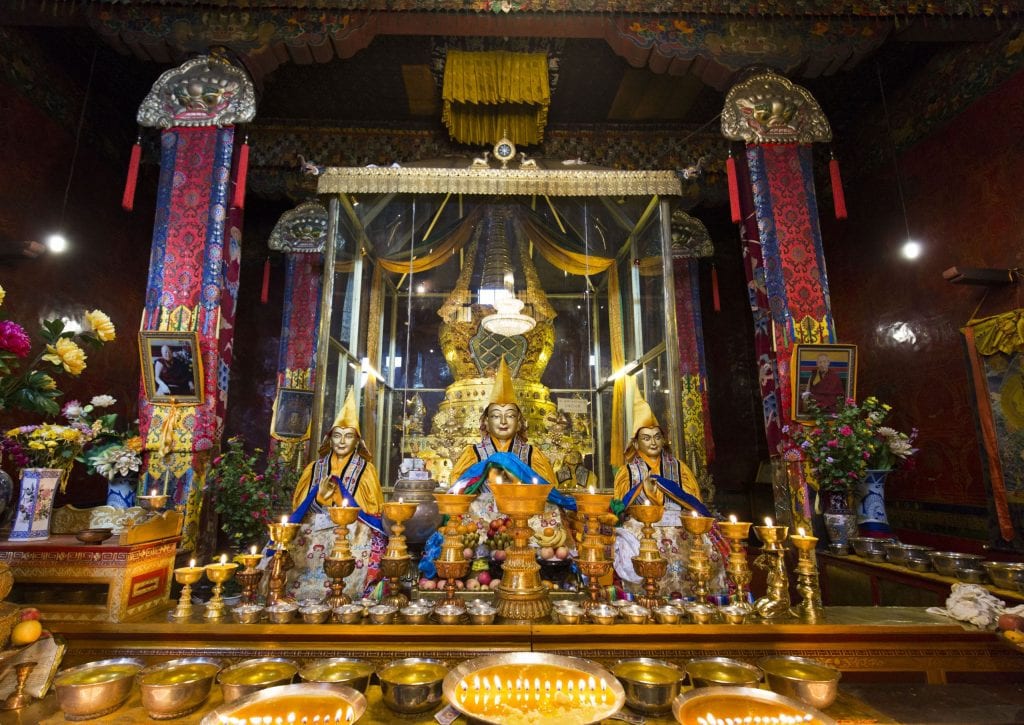
The Ganden Monastery is the head of the so-called Gelugpa or Gelug movement within Buddhism in Tibet. Gelug is the latest school within Buddhism in Tibet and there are six monasteries of which three are famous and Ganden is at the head of all. During its heydays it could house over 5000 monks but today there live approximate 300-400 monks. The monastery got completely destroyed in 1959 and again in 1966 until there was nothing left. It has been rebuilt since the beginning of the 80’s and its construction still is continued today. After the Serdung we stopped at the printing facility. Here the books for the monks are printed. Huge rows of metal plates with inscriptions are printed on paper and then binded together to complete the book. We were lucky and they were printing and we could see the whole process.
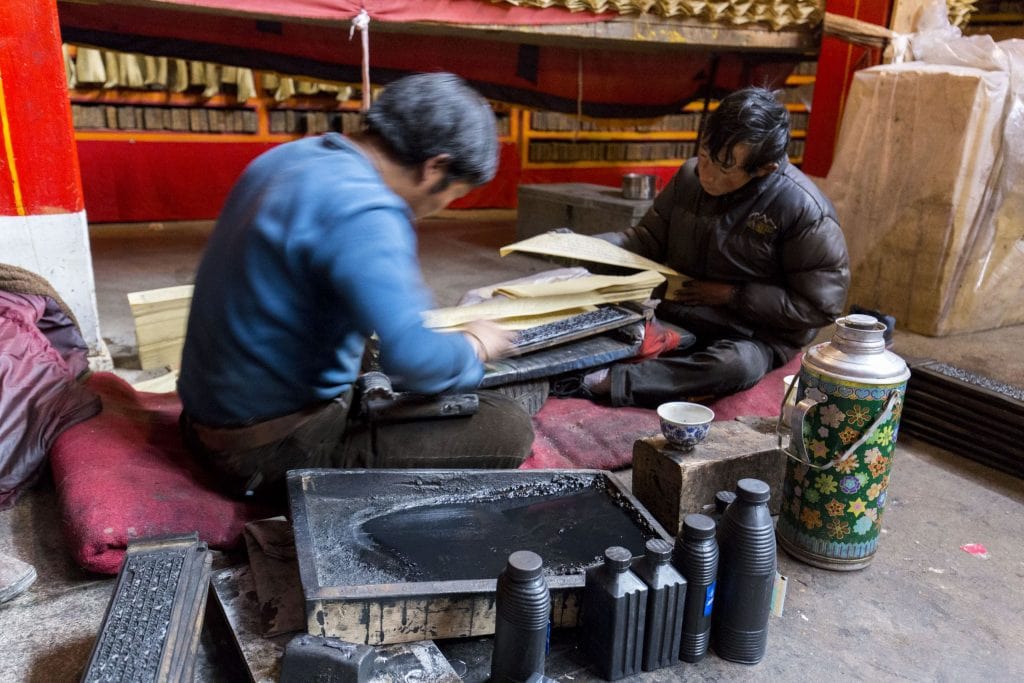
While exploring the Ganden monastery we passed by the living quarters and several chapels with monks praying. Every building has so many old artifacts of great significance that you do not know where to look first. Most of the places contain also golden images of the founder, Tsongkhapa. The monks were very friendly and welcoming us, offering us tea and explaining all we wanted to know.
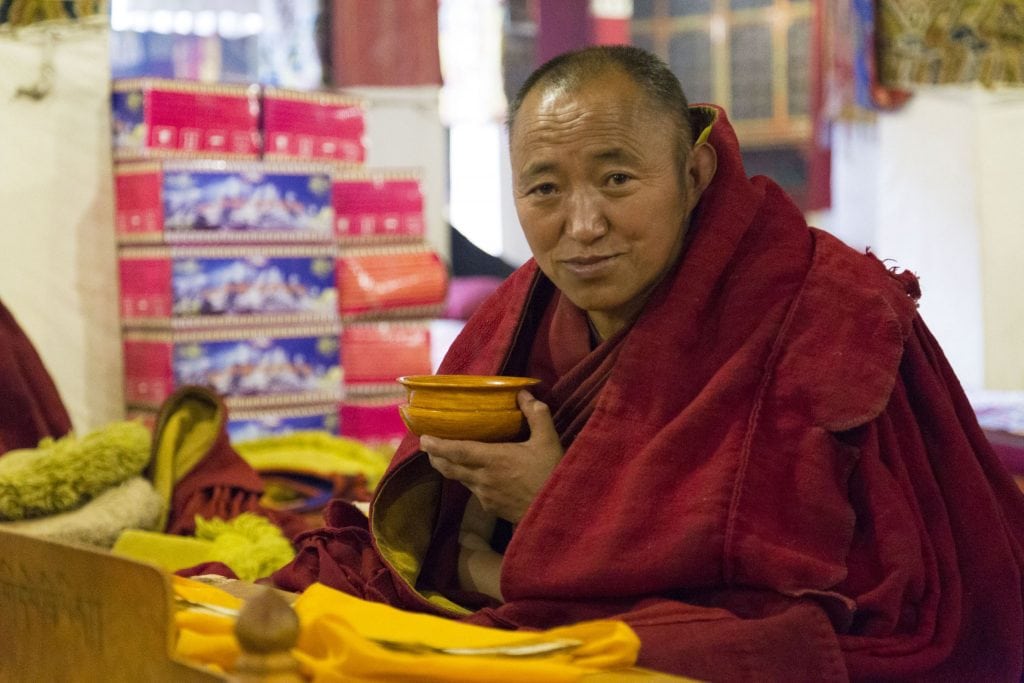
Our last stop at the Ganden Monastery was the main building. It was originally built in 1409 but the current building is just over two decades old. In previous times it was built with bronze bricks but this you do not see any more now. Everywhere you can see the butter burning (see also photo’s in gallery) which in Tibet is common to burn instead of candles. The smell I found much better as burning candles. When we entered the monks were just readings texts. An interesting spectacle to see as a Westerner.
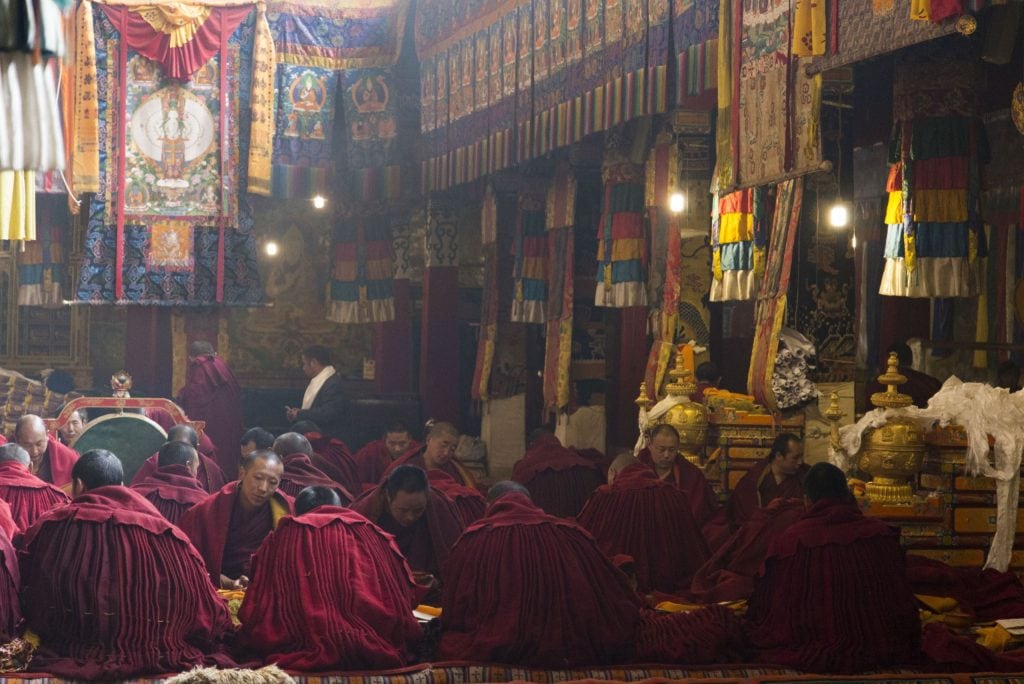
The hall, also called Tsokchen Assembly Hall, houses statues of Maitreya Buddha and the master Tsong Khapa. Sitatapatra and Manjushree Bodhisattva can be found in an adjacent hall. There are also many three-dimensional mandalas which are each a masterpiece of art. When the monks finished we also headed further to our next destination the Drak Yerpa monastery which is built in caves.
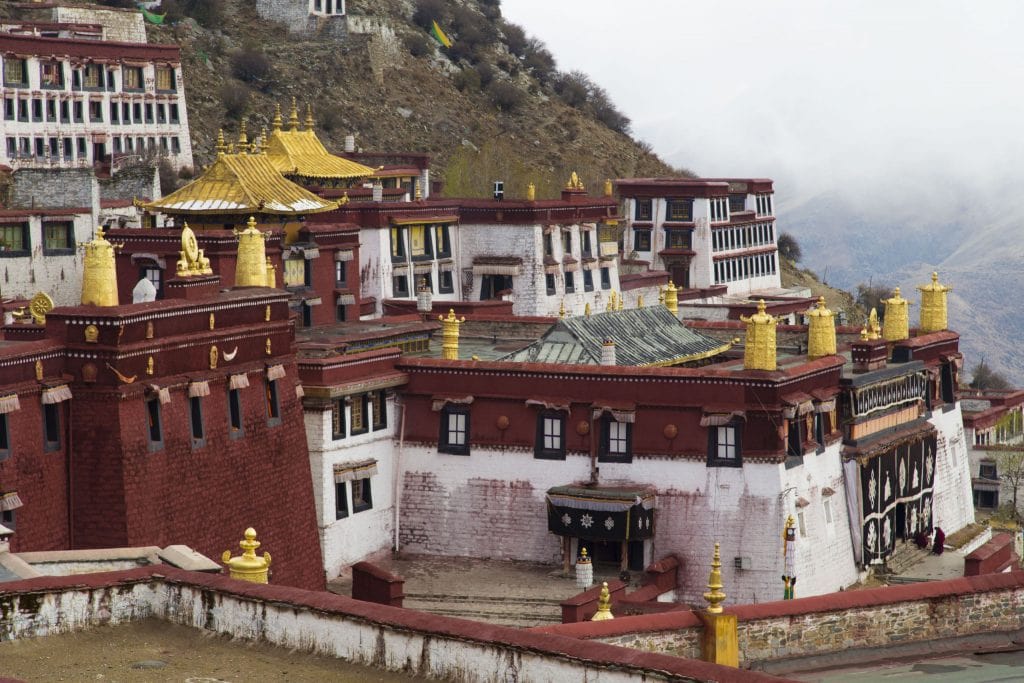
Drak Yerpa Monastery
Drak Yerpa is on the other side of the river which made us first drive back to Lhasa and then to the monastery. As it’s also in the North of Lhasa, Drak Yerpa can best be combined with the Ganden Monastery. It is located in the Yerpa Valley up the mountain at around 4300-4400 meters with over 300 caves. There are buildings built around the caves for the monks to pray.
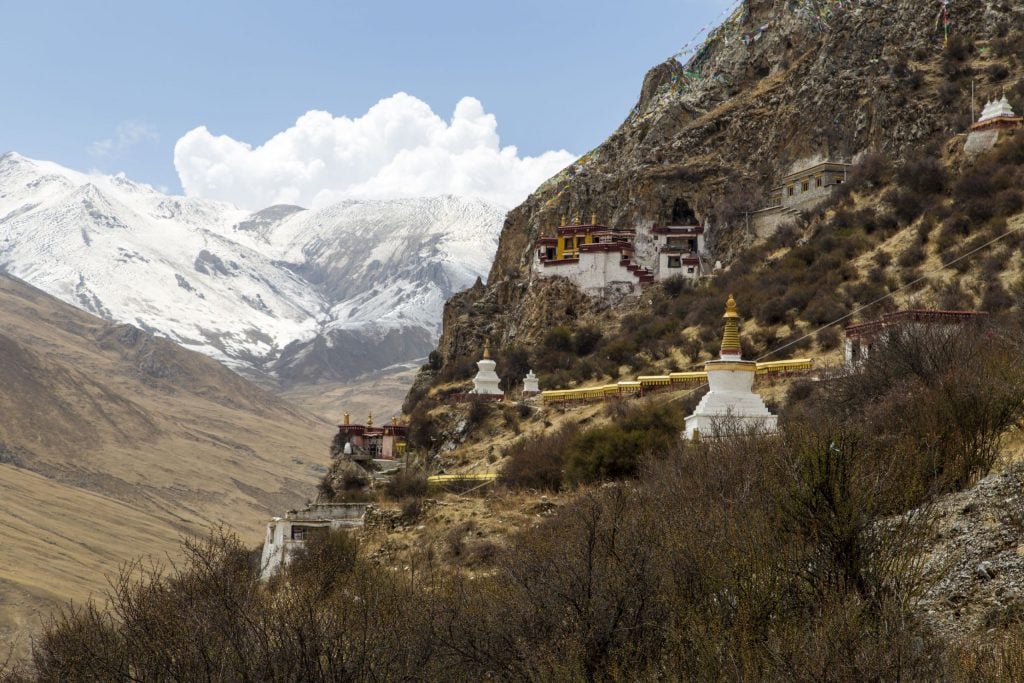
The history at the site of the Drak Yerpa monastery dates back to pre-Buddhism times and is said to be amongst the oldest meditation sites in Tibet. In the early 7th century the queen of Tibet, Monza Triuham, founded Drak Yerpa. In the centuries after it stayed a central place for meditation and many important people meditated here. Many of the old buildings are still in ruins from the Cultural Revolution but some are restored and can be visited today.
TIBET – 7 days in Lhasa: a Tibet itinerary & practical travel tips
One of the buildings had its statues restored at the time of visit and it was very interesting to see how this was done. They mix clay with straw and built up the inner parts and then with smooth clay finish it. After that is dried up it is painted in the beautiful colors the statues always have. Today some monks live at Drak Yerpa monastery but the number is very strict controlled due to events from the past. We had some small talks with some of the monks who were eager to explain anything we wanted to know. A place full of history and a place that makes you think.
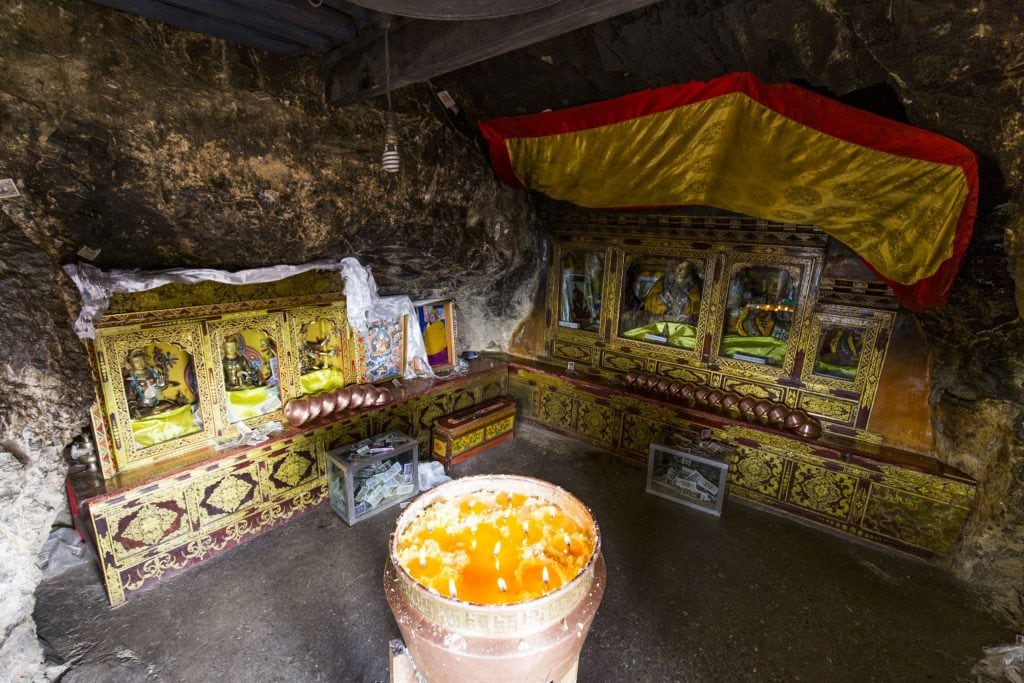
Across the monastery there is a sky burial site on top of a small mountain. You can walk around it and have a great panoramic view on the Drak Yerpa monastery. If you want to sit on an authentic Tibetan dressed yak (see gallery) then this is also the place to do that as it’s easy and laid back. No hurry. No pushing and a fair price. If you look up the mountain you see a huge stone. It is said when it comes fully out of the mountain the world will change to the next stage. You can hire a cave there to meditate on what it could be 😉
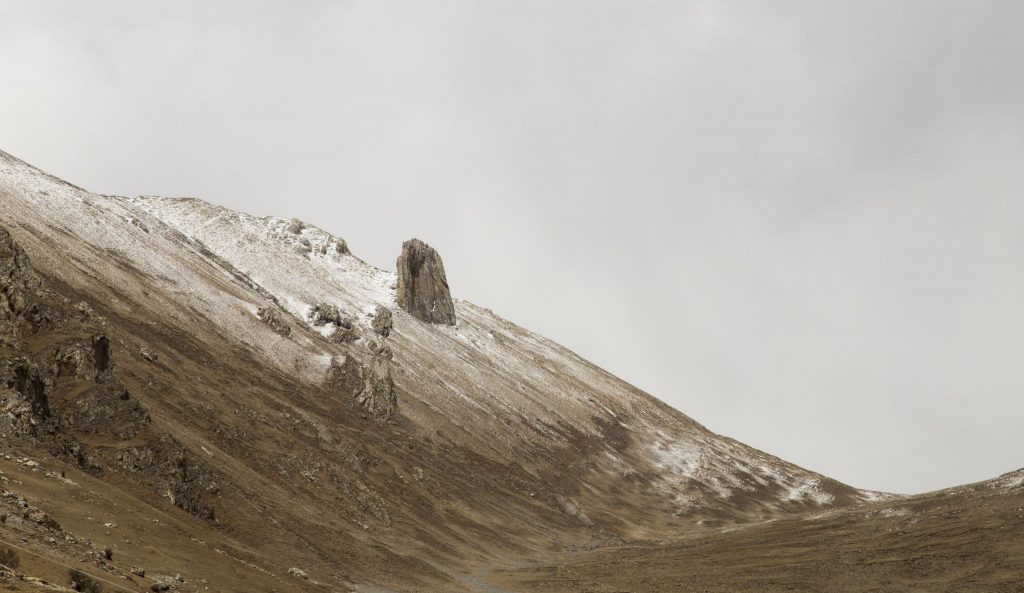
If you walk around or maybe to the top, you will see in the valley some burial graves in the form of white hills. Also various remains of previous buildings of the temple are scattered on the mountain between the flags with prayers for the gods. Sit down for a moment on the railing and enjoy the magnificent view over the Yerpa valley. Once you finish continue to a Tibetan village or back home.
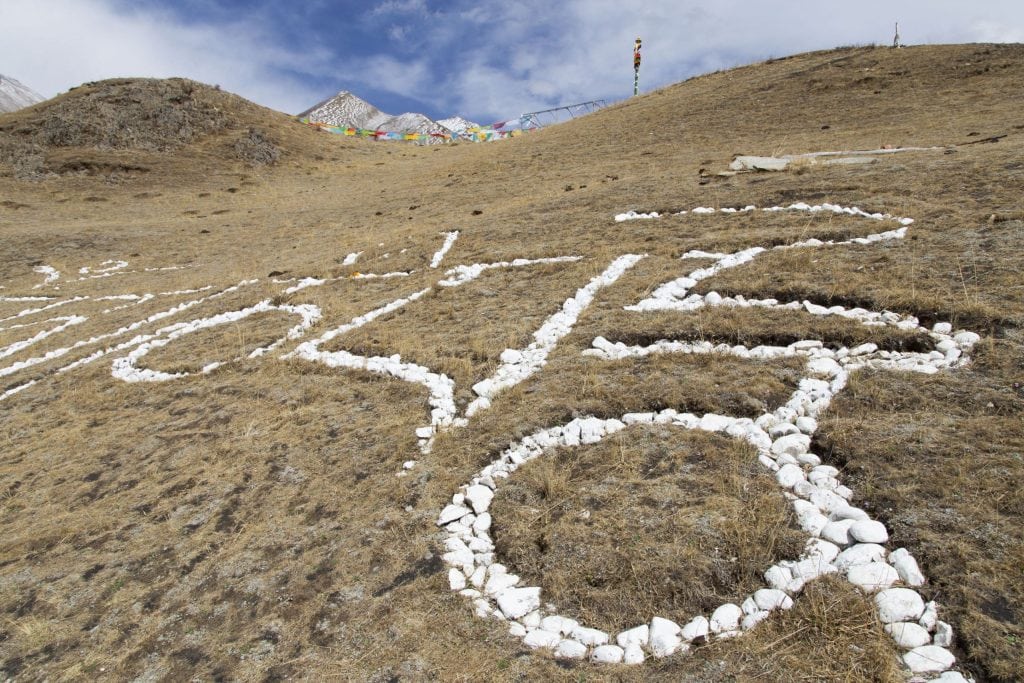
A traditional Tibetan village
If you finished Ganden Monastery and Drak Yerpa not to late you can stop by a Tibetan village on the way back. My son and I walked a bit around for half an hour to see how the people lived. I had also the option to see all the brown round things on the stones everywhere up close and discover what they were. The villagers explained this was yak shit and they mix it with straw to burn it later in winter for heating.
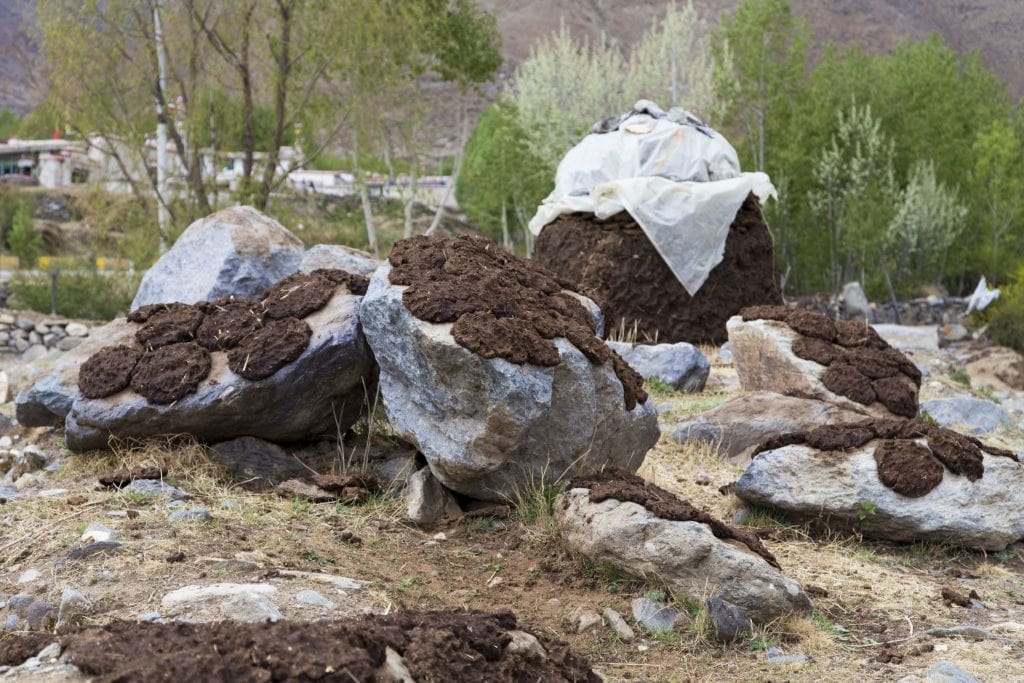
After a long day we were driven back to our hotel, the Intercontinental Lhasa Paradise, by the Tibet Ctrip Travel Service guide and driver. We passed over a pass with lots of flags, probably the most we saw during our trip in Tibet. Lots of new impressions had made us tired and after a nice Tibetan dinner we were off to bed early. The next day our next adventure out of Lhasa would be waiting for us.
Stay tuned for more stories and subscribe to the newsletter or follow CTB on social media (Facebook, Twitter, Instagram including Instagram stories; on all social media you can find CTB @christravelblog) to get updated information.
Did you visit Tibet too or do you have questions? Please leave a comment at the bottom of the page. Love to hear from you!
Gallery Ganden Monastery & Drak Yerpa
Click an image for a full screen gallery of more photos taken during this trip. If you like to use any photo for commercial, private or editorial use please contact first for permission and/or pricing.





